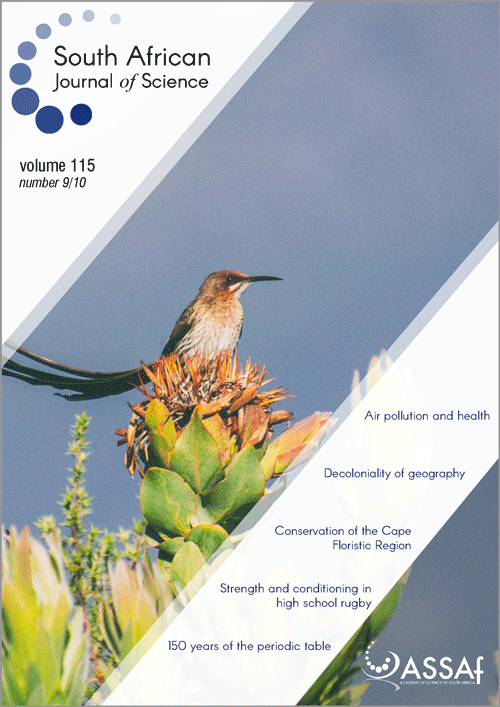Endostructural assessment of a hominin maxillary molar (StW 669) from Milner Hall, Sterkfontein, South Africa
DOI:
https://doi.org/10.17159/sajs.2019/6404Keywords:
Homo, late Pliocene-early Pleistocene, maxillary first molar, enamel-dentine junction, EDJ, enamel thicknessAbstract
The site of the Sterkfontein Caves, South Africa, is one of the richest early hominin fossil-bearing sites in Africa. Recent excavations in the Milner Hall locality have contributed to the discovery of new hominin specimens, including StW 669, a right permanent maxillary first molar (M1). StW 669 was excavated from the T1 deposits, which consist of a mixture of sediments from Members 2 and 5 of the Sterkfontein Formation. Accordingly, the deposits have the potential to contain remains of Australopithecus, Paranthropus and Homo. In this study, we employed micro-focus X-ray tomography in order to assess dental tissue proportions, enamel thickness distribution and enamel-dentine junction morphology as approaches to investigate the taxonomy of StW 669. We compare our results to those generated on the teeth of Australopithecus africanus, Paranthropus robustus, Homo erectus, Homo antecessor, Homo neanderthalensis and Homo sapiens. Our results suggest that StW 669 shares quantitative and qualitative affinities with M1s of Homo in terms of tissue proportions (i.e. two- and three-dimensional average and relative enamel thickness of 1.2–1.3 mm and 18.4, respectively) and enamel thickness distribution (i.e. thickest enamel on the lingual aspect of the protocone). However, data on the enamel-dentine junction morphology of StW 669 are inconclusive as to the tooth’s taxonomic affinities. Pending additional morphometric analyses, our studies of inner morphology of the crown of StW 669 support its attribution to Homo.
Significance:
- The Sterkfontein Caves have contributed significantly to our understanding of early human evolution and continue to do so. This study highlights the specific value of the Milner Hall locality as a valuable store of hominin fossils. Moreover, we tentatively clarify the enigmatic taxonomic status of StW 669, a right permanent maxillary first molar, excavated from the T1 deposit of Milner Hall. Pending additional morphometric evidence, our preliminary data on tissue proportions, enamel thickness distribution and enamel-dentine junction morphology, suggest an attribution of StW 669 to early Homo. This result is significant given the historical contention concerning the presence of early Homo at Sterkfontein.
Published
Issue
Section
License

All articles are published under a Creative Commons Attribution 4.0 International Licence
Copyright is retained by the authors. Readers are welcome to reproduce, share and adapt the content without permission provided the source is attributed.
Disclaimer: The publisher and editors accept no responsibility for statements made by the authors
How to Cite
- Abstract 1426
- PDF 614
- EPUB 230
- XML 437












.png)